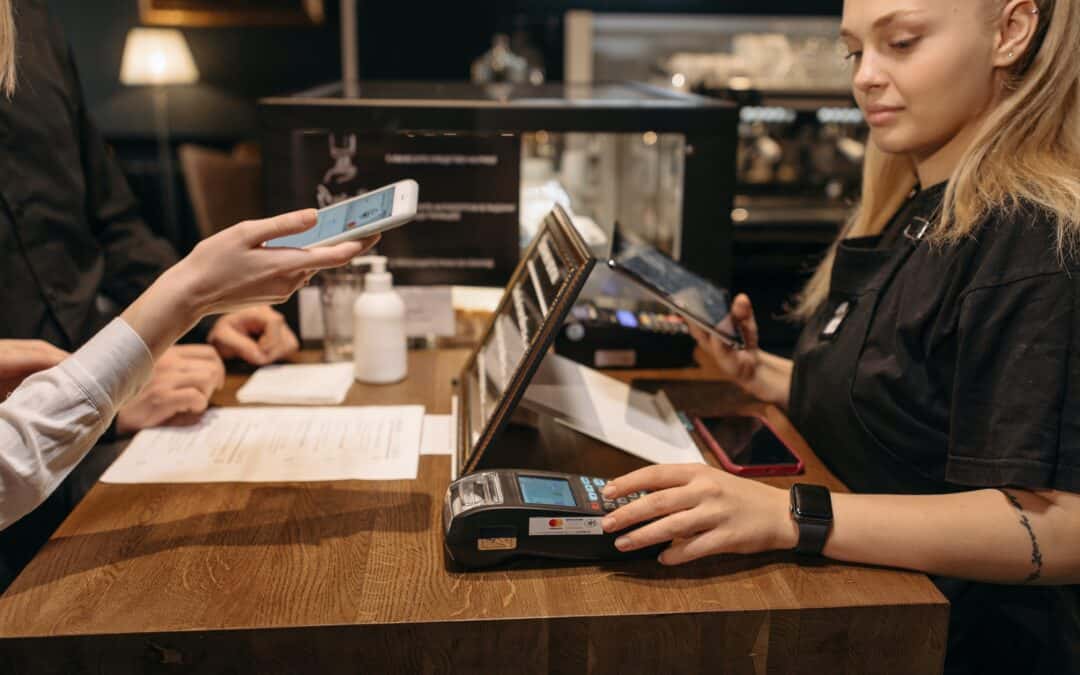Your restaurant will probably upgrade to a more advanced point-of-sale (POS) system, which might come as good news or bad news. The bad news is that it’s expensive — a new POS setup can cost thousands of dollars, depending on the number of terminals and other equipment you need to run it effectively.
The good news? POS for restaurants is an investment you’ll rarely regret because this system can take your restaurant’s operations to the next level.
Here we have discussed the POS system and the most important features to consider when shopping for your next POS system.
What is a POS System?
POS stands for Point of Sale, which means it handles transactions at your business. When the cashier swipes a customer’s credit card or runs their card through a debit machine, the information is sent to the point of sale terminal and processed there. This data includes details like how much was spent and what items were purchased.
In addition to processing payments, POS systems also help with inventory management and employee scheduling. With this in mind, you’ll want to ensure that when you’re looking for a new point-of-sale system, it has vital features inbuilt to meet your needs.
A comprehensive reporting function allows you to look back on sales history to see trends and track individual store performance and sales. Analyzing those numbers helps provide insight into your strategies’ success and how often you need certain supplies. The key here is not just looking at raw numbers but breaking down where profits come from (e.g., chicken dishes vs. beef).
It’s also helpful if the system tracks historical sales so that when an event such as Black Friday rolls around again, you have past data showing what sold well during those events — or any other time. You might decide not to offer deep discounts during Black Friday again because those products underperformed last year — the POS will let you know.
What Features Must a Restaurant POS Have?
1. Ecommerce Integration
Restaurants must make an ecommerce website to increase their reach and visibility online. The pandemic proved that businesses could thrive if they go online. Therefore putting your restaurant online, available for your target consumers, can help a lot.
Ecommerce POS integration is a solution that provides a seamless connection between your POS system and eCommerce platform. Your physical and online store POS systems are synchronized via a different platform or plug-in. It lets you collect real-time data from the system and then process transactions on both online and offline channels.
Moreover, it gives automatic inventory updates both for online and in-person sales. It also provides a more centralized solution for online and offline transactions using different payment methods.
2. Security
Restaurants often have many different items that need to be secured against theft. If you keep cash in the register, it must be locked up when it is not used. Keeping credit cards and other sensitive information on file is essential as well.
A POS system should have all of these security features built in, but if yours doesn’t, ensure you know what you are getting before signing a contract. Ensure your POS system supports data encryption.
Data encryption ensures that even if someone gets their hands on a computer or hard drive containing customer data, they won’t be able to do anything with it because it has an unbreakable code that protects it.
3. Speedy Interface
A speedy interface is crucial to the success of any point of sale. If a customer has to wait too long, they’ll likely walk out the door before they make their purchase. Furthermore, if a customer has to go through a laborious process to pay for an item, it will frustrate them and cause them to leave.
Considering the interface’s speed can avoid such consequences when choosing a POS system. Consider how many screens are involved in the transaction, how much text is needed to complete a transaction, and whether there are any processes like reordering or customer rewards that might slow things down.
4. Inventory Tracking
No matter what type of food you serve, you need an inventory tracking solution to keep tabs on all the items in your kitchen. Without it, you’ll lose money by overbuying or underbuying products. A good inventory tracking solution can help avoid costly food spoilage and theft.
5. Easy to Setup
One of the most important things to look for in a restaurant POS is how easy it is to set up. This can be a big issue with systems that require extensive programming or are not user-friendly.
Look for a system that doesn’t require any technical skills and is intuitive enough that you can find what you need without having to read through pages of instructions. You also want one that offers an app that lets you take orders on the go, so you’re always ready when customers come into your establishment.
Keep in mind, too, that some systems have more advanced features than others, like scanning barcodes to ring up items and being able to run reports. You’ll want to think about which ones will work best for your needs.
6. Easy-to-Use Digital Menu Boards
Digital menu boards are a great way to update your menu at the last minute and manage specials. They also offer an easy way to see what’s on special without having to walk around or ask the server. Digital menu boards are also great because they’re easy to update in real time. You can change prices, add new items, and switch out pictures in seconds instead of having to reprint menus that won’t be accurate again until the next printing cycle.
7. Kitchen Communication
In the kitchen, communication is key. When orders are coming in from the front at a rapid pace, it can be challenging to keep up with everything that needs to happen in the kitchen. A point-of-sale solution should allow staff in both departments to collaborate and communicate effectively through several channels. For example, when an order comes into the kitchen, staff can be notified with a text message on their devices.
8. Efficient Customer Management
Choose a POS system that can store basic data of your customers, such as contact and names. The data can help sales managers to personalize customers’ dining experiences, which improves customer loyalty.
9. Impressive Reporting Capabilities
Reporting capabilities are an essential feature of any POS system, but they can be even more critical in a restaurant. Reporting is how you track the performance of your business and make adjustments when needed. Restaurants often need to report food costs, labor costs, revenue, net profit, and more. If you want to do this effectively, your reports must be complete and accurate.
Conclusion
As you can see, there are many factors to consider when deciding which restaurant POS software is right for your business. And if you’re struggling to decide on one and want a starting point, use the above guide as a reference.








